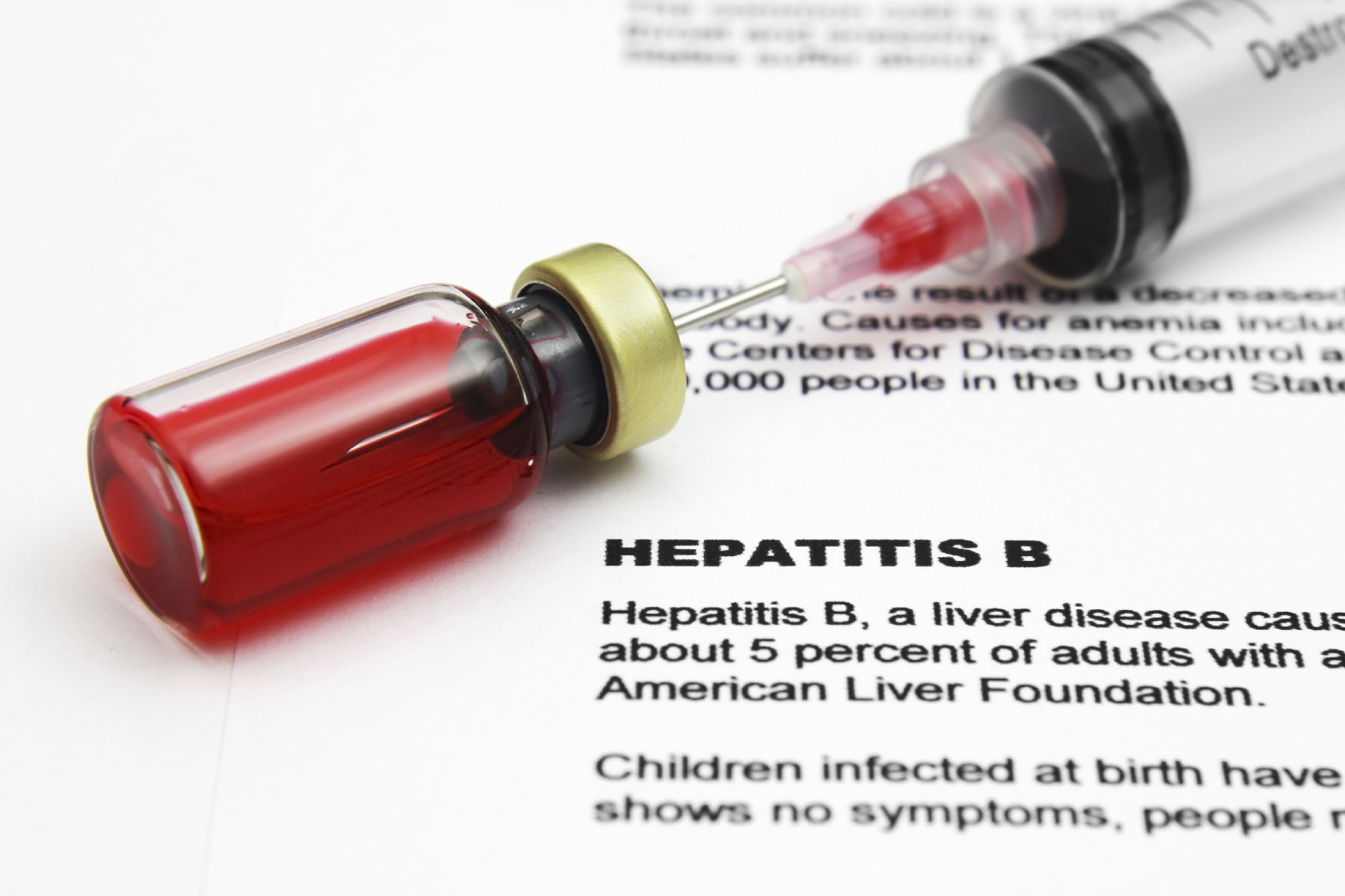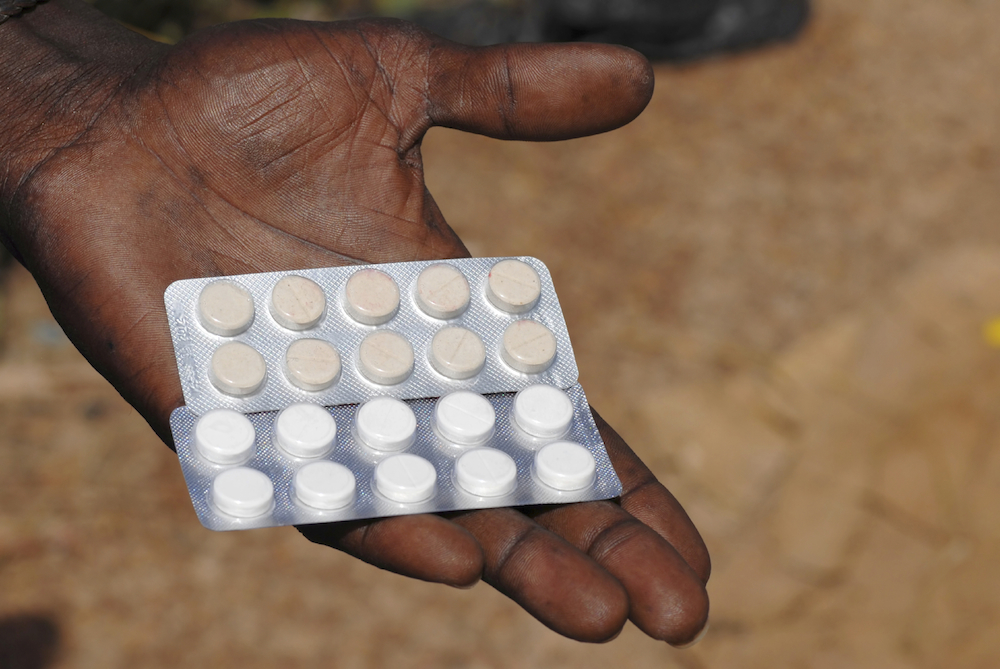Autism Spectrum Disorder is a social communication disorder in someone displaying repetitive and restrictive interests. Diagnosed in early childhood, children struggle to develop social relationships required for further learning and independent living. This article discusses changes to the diagnosis, how the diagnosis is made, the prevalence, causes and interventions. Importantly, this review guides medical students towards an understanding of what to expect in individuals with autism spectrum disorder and how to interact with them.
What is autism?

Autism is diagnosed according to the American Psychiatric Association (APA) guidelines in the Diagnostic and Statistical Manual of Mental Disorders (DSM), [1] or alternatively, according to the International Classification of Diseases (ICD) published by the World Health Organization. [2] Mostly because of convention, the DSM is more often used in the diagnosis of autism in Australia.
From 2013, ‘autism’ would be a short form of the term Autism Spectrum Disorder (ASD). A diagnosis of ASD applies where there is evidence of functional impairment caused by:
Problems reciprocating social or emotional interaction, including difficulty establishing or maintaining back-and-forth conversations and interactions, inability to initiate an interaction, and problems with shared attention or sharing of emotions and interests with others.
Severe problems maintaining relationships, ranging from a lack of interest in other people to difficulties in pretend play and engaging in age-appropriate social activities, and problems adjusting to different social expectations.
Nonverbal communication problems such as abnormal eye contact, posture, facial expressions, tone of voice and gestures, as well as an inability to understand these. [1]
Additionally, two of the four symptoms related to restricted and repetitive behaviour need to be present:
Stereotyped or repetitive speech, motor movements or use of objects.
Excessive adherence to routines, ritualised patterns of verbal or nonverbal behaviour, or excessive resistance to change.
Highly restricted interests that are abnormal in intensity or focus.
Hyper- or hypo-reactivity to sensory input or unusual interest in sensory aspects of the environment.
Symptoms must be present in early childhood, but may not become fully manifest until social demands exceed limited capacities. There must be an absence of general developmental delay. Finally, symptoms should not be better described by another DSM-5 diagnosis.
From the criteria it is important to note that there are many combinations of symptoms that can lead to a diagnosis of ASD. Therefore, not only do individuals with ASD share the same degree of uniqueness as the rest of the general population, but even the type of ASD they experience can be unique.
Confusion can arise in the use of the terms ‘autism’ and ‘autism spectrum disorders.’ Part of the reason for this emerges from the subtypes of Pervasive Developmental Disorders (PDD) previously recognised by the APA. PDD previously contained the subtypes Asperger’s Disorder, Childhood Disintegrative Disorder, Autistic Disorder and PDD-Not otherwise specified (NOS). While the ICD also recognizes Atypical Autism, recent changes to the DSM should simplify the nosology. [2]
The current ASD diagnosis criteria came into effect from May 2013 and is expected to identify approximately 90% of children with a clinical diagnosis from the previous DSM-IV. [3] A new diagnosis called Social Communication Disorder (SCD) has been created. Simply put, SCD is ASD, without the restrictive and repetitive interests. It is not yet clear how many children will receive a diagnosis of SCD, nor how many children previously identified with a DSM-IV diagnosis of PDD would meet the criteria for SCD only.
Diagnoses made under DSM-IV guidelines are still valid. A new diagnosis is not required simply because of the change in criteria. However, individuals being assessed for ASD now, and in the future, will be diagnosed under the new criteria.
Features of ASD
Social communication, interaction and motivation
ASD is principally characterized by social communication and interaction deficits. Individuals often experience difficulty with interpreting facial expressions, tone of voice, jokes, sarcasm, gestures and idioms. Imagine the literal meanings of “Fit as a fiddle,” “Bitter pill to swallow” and “Catch a cold.” Some people with ASD may have only limited speech or may be completely non-verbal. [4,5] Echolalia, pronoun reversal, unusual vocalisations and unusual accents are common. [4,5] Alternative, augmentative and visually based communication techniques may help when a child is unable to consistently follow verbal instructions. In this regard, touch-screen portable devices may appeal to their visual and pattern-orientated learning strengths (see Figure 1). [6]
Difficulties with social interactions mean that affected individuals often grow up without a social circle, and as a consequence, miss out on peer-initiated learning opportunities. [7] Such challenges include difficulty with understanding unwritten social rules such as personal space and initiating conversation. [7] They can appear to be insensitive, because they are unable to perceive how someone else is feeling. Turn taking and sharing is not intuitive or learned, and individuals need to be trained how to do this. An inability to express feelings, emotions or needs results in inappropriate behaviour such as unintentionally aggressive actions. [8] This can lead to isolation, a failure to seek comfort from others and signs of low self-esteem. [7] Individuals can also suffer from hypersensitivity to sensory stimuli, which may lead them to prefer limited social contact. Individuals do feel enjoyment and excitement; however, this tends to be a personal experience and often goes unshared, which may be due to a failure to need the reward of another’s attention and praise. [9]
Imagination
Individuals with ASD may experience challenges with social imagination. [10] Individuals are less likely to engage in make-believe play and activities. They are less likely to determine and interpret other’s thoughts, feelings and actions, and as a consequence unable to appreciate that other people may not be interested in their topic of interest.
Individuals with ASD are often unable to predict outcomes, or foresee what might occur next, including hazards. [11] This leads to a difficulty in coping in new or unfamiliar situations, or making plans for the future. Parents, carers and health professionals often need to stick to routines to avoid unpredicted events that could cause distress.
Sensory and motor processing
Sensory information processing is heightened for tactile input, but reduced for social input, in individuals with ASD. [12] Changes in these inputs are understood to contribute to the repetitive and restrictive interest criteria of the diagnosis. Hence, the state of the tactile environment is important to the wellbeing of individuals with ASD, potentially serving as an aggravation by, or as a refuge from, incomprehensible cues. Changes in sensory information processing may present as an inability to distinguish context-relevant stimuli, and varying capabilities and capacity to respond to a stimulus (e.g. ignoring some sounds but over-reactive to others). They may also experience difficulty with proprioception and responding to pain, including temperature extremes. [12,13] Individuals may explore their environment by smelling or mouthing objects, people and surfaces, and as a consequence, develop eating behaviours that relate to smell, texture or flavor, including inedible objects. Participating in repetitive movements such as rocking, bouncing, flapping arms and hands, or spinning with no apparent dizziness is sometimes as a means of coping with stress, or alternatively, could be used as a means of self-stimulus, providing pleasure. [12] Contrary to popular perception, savant skills are uncommon in individuals with ASD. [14]
What causes ASD?
ASD is a multi-factorial disorder. There is no one cause of ASD. The most prominent risk factor is genetics, both familial and de novo. [15] Studies have shown that among monozygotic twins, if one child has ASD, then the other will be affected about 36–95% of the time. [16] In dizygotic twins, if one child has an ASD, then the other is affected up to about 31% of the time. [16] Parents who already have a child with an ASD have a 2%–18% chance of having a second child who is also affected. [17]
In addition to the well-documented increase in chromosomal abnormalities associated with advanced maternal age, the risk of ASD is also associated with advanced paternal age. [18] The current hypothesis to explain this observation is that small, de novo genetic mutations and rearrangements accumulate in the sperm, which are then incorporated into the DNA of the child. [19,20] Other risk factors include premature birth or low birth weight, preeclampsia [21] and in utero exposure to medications, particularly sodium valproate. [22] There is no evidence to support the theory that the measles, mumps and rubella vaccine causes autism. [23]
Three cognitive theories have evolved to explain the behavioural challenges of ASD: the theory of mind deficit, executive dysfunction, and weak central coherence. The first posits that individuals with ASD are unable to recognize mental states in others, leading to social behaviour discordance. [24,25] The second attempts to explain a lack of goal directed behaviour, and lack of behavioural flexibility. [26] Both these cognitive explanations may be underpinned by an early deficit in social motivation, whereby underdevelopment of the brain regions involved in social recognition and response leads to a failure to learn social cues and their contexts. [27] This has been traditionally thought to impact on imitation learning from which social and food reward by infants is derived and goal-directed behaviour emerges, although research in the area is equivocal. [28] Whether this same underdevelopment also delays acquisition of receptive and expressive language is unclear. [29] Finally, the weak central coherence theory is a means of understanding why individuals focus on details and neglect the context. [30] Yet, it could be argued that a neglect of the context emerges from a deficit in social motivation.
Epidemiology
In the community there is considerable concern of an ASD epidemic. Parental reports indicate ASD prevalence may have increased from 1 in 88 in 2007 to 1 in 50 children in 2012. [31] Currently, the prevalence of ASD in Australia is about 1 in 165 children aged 6-12 years. [32] In the USA this prevalence is slightly higher with 1 in 50–88 eight-year olds receiving a diagnosis; [31,33] this breaks down to 1 in 31–54 boys and 1 in 143–252 girls. [31,33]
A true appreciation of the changes in ASD prevalence can only come from understanding the historical basis of the diagnosis. [34,35] In this regard, marked changes in prevalence have been caused by nosology changes (e.g. autism was once called childhood schizophrenia) and a number of changes to the APA PDD criteria in the DSM over the past 30 years. [36] Other contributing factors include demographic variables (e.g. where older individuals may have missed receiving a diagnosis, but receive one now with the help of a retrospective investigation such as archival home video), increased awareness of normal childhood development and developmental disorders, changes in testing and protocols, and the sampling of data, such as parents versus clinicians, or state schools versus all children. Other factors that often go unreported include socioeconomic factors (e.g. those with sufficient knowledge and resources are able to seek out professional assistance and are more likely to receive a diagnosis than those without) and pressure on clinicians to provide a diagnosis, thereby assisting struggling parents access services and financial support. Trying to account for all these factors in an epidemiological study is very difficult. Hence, the true historical prevalence of ASD is difficult to establish. Studies that have tried show no, or a slight, increase in ASD. [35]
How is a diagnosis made?
While parents often suspect developmental delay or ASD, the variability in child development during the first four years can lead to variability in the age of first diagnosis – typically around three years of age. [34] Reliability of the diagnosis also suffers as a consequence. [37] Restrictive and repetitive interests can be difficult to identify before the age of four because even typically developing two- and three-year-olds can show repetitive behaviours. Since the new diagnosis also requires behaviours to be demonstrably incompetent (such as during a child’s interaction at day care), a lag between symptoms and diagnosis is likely to continue.
In Australia, paediatricians, clinical psychologists, psychiatrists and speech pathologists specialising in the field of paediatrics or adolescence make a formal diagnosis of ASD. Further, within these specialisations, diagnoses are likely to be made by practitioners with experience in testing and diagnosing ASD.
A typical diagnostic evaluation involves a multi-disciplinary team including pediatricians, psychologists, speech and language pathologists. Testing takes a number of hours and can be exhausting for subjects, parents and clinicians. Because of this and other factors, waiting times for diagnosis can be up to 24 months across the country, with particular difficulties in rural and remote areas. [38]
In initial consultations, screening tools may be used such as the Autism Behavior Checklist (ABC), Checklist for Autism in Toddlers (CHAT), Modified Checklist for Autism in Toddlers (M-CHAT), Childhood Autism Rating Scale (CARS) and Gilliam Autism Rating Scale (GARS). However, for a diagnosis, the Autism Diagnostic Interview-Revised (ADI-R) and Autism Diagnostic Schedule (ADOS) are used. [39,40]
Differential diagnoses and comorbidities
There is no single test for ASD and there are no unique physical attributes. For this reason differential diagnoses such as hearing and specific language impairments, mutism, environmental conditions such as neglect and abuse, and attachment and conduct disorders need to be excluded. Disorders similar to ASD include Social Communication Disorder and Social Anxiety Disorder. In the latter, communication is preserved but a degree of social phobia persists.
Since ASD diagnoses are made according to a description of a set of behaviours rather than a developmental abnormality or genetic condition, it is not uncommon to find a diagnosis of ASD comorbid with another pre-existing condition. For example, approximately 20% of children with Down syndrome meet the diagnosis for ASD. [41] Theoretically, all children with genetic abnormalities such as Angelman syndrome or Rett syndrome would also meet criteria for a diagnosis for ASD. In the event of an existing condition, a diagnosis of ASD may also be warranted in order to guide the child’s behavioural management and education.
ASD often co-occurs with another developmental, psychiatric, neurologic, or medical diagnosis. [42] The co-occurrence of one or more non-ASD developmental diagnoses with ASD is approximately 80%. Co-morbidities often occur with attention deficit hyperactivity disorder, Tourette syndrome, anxiety disorders and dyspraxia. Although common, the majority (~60%) of children with ASD do not have an intellectual disability (ID; intelligent quotient ≤70). [33] Some individuals with an intellectual disability are likely to always remain dependent on health care services.
There is an increased risk of epilepsy in individuals with ASD. However, the increased co-morbidity of epilepsy is strongly linked to ID – 24% in those with ASD and ID, and 2% with ASD only. [43] There is no evidence that a particular epileptic disorder can be attributed to ASD (or vice versa). [44] The more common presentations include late infantile spasms, partial complex epilepsies and forms of Landau-Kleffner syndrome. Mutations in the tuberous sclerosis genes are particularly associated with ASD and epilepsy. [45]
Gastrointestinal disorders (GID) are a common complication in ASD. [46] Given that some “cognitive” genes of the brain are also expressed in the enteric nervous system, decreased visceral sensitivity, myogenic reflexes or even CNS integration of visceral input may be exacerbated in genetically susceptible individuals. Language impairments may be associated with toilet training difficulties, which can lead to constipation with overflow incontinence and soiling. However, medications and diet are not significantly associated with GID in individuals with ASD. [47]
What treatments are available?
At this point in time, it is thought that biological changes affect the function or structure of the brain over time, leading to different developmental, psychological and behavioural trajectories. There is no cure for ASD, but early intensive behavioural intervention (based on Advanced Behavioural Analysis) is somewhat successful towards promoting learning and independent living. [48] This intervention aims to addressing the core deficits of ASD in a structured, predictable setting with a low student-teacher ratio (initially 1:1). It promotes behavioural systems for generalization and maintenance, promotes family involvement and monitors progress over time. There is some evidence to suggest that participation in social skills groups also improves social interaction. [49] Other intervention strategies are pedagogical approaches to matching faces and actions to meanings.
The Australian Government has made available a support package called Helping Children with Autism. The package includes information, workshops and financial assistance for early intervention services.
At present, pharmacological intervention targets some symptoms associated with ASD. These include serotonin reuptake inhibitors, anti-psychotics, anti-epileptics, mood stabilisers and other medications to treat hyperactivity, aggression and sleep disruption. Given the degree of notable side effects in these pharmacotherapeutics, new generation compounds continue to be tested. There are high rates of complementary and alternative diet use in children with ASD, but a lack of rigorous studies means that the evidence for efficacy is poor. [50,51]
Guidelines on dealing with children with ASD
As medical students and interns, there may be opportunities to participate in a diagnostic clinic or therapy session. Community placements also provide insight into understanding special education interventions, respite and support. However, most interactions would occur during resident training or paediatric rotations. In these situations students will be observing or assisting specialists.
Children with ASD are only likely to be admitted into hospital with a medical problem distinct from their behavioural features. Nevertheless, children with ASD are twice as likely to become inpatients. [52] The more common reasons for hospital admission and general practice visits are seizures, sleep disturbances and constipation. [53]
Parents may describe their child as high-functioning, which tends to imply an IQ >70. This doesn’t usually reflect the social capacity of the child. Ultimately, as with other children, it is important to know the child’s strengths and weaknesses; for example, whether they respond more to visual or verbal communication. Most considerations when working generally with typically developing children also apply to children with ASD and developmental disorders. Suggestions for interacting with individuals with ASD can be found in the Table.
Ultimately, by engaging the parents and working with the child’s strengths, most issues can be resolved. Even for experienced clinicians, interactions can present challenges. It helps to be patient and adaptable. In some cases it may be pointless performing some examinations if doing them would be disruptive and not provide critical medical information. In such cases, working from the collaborative history will have to suffice.
ASD workshops and training opportunities
Workshops and training opportunities for community members range from one-hour presentations to nationally certified training programs. There are currently two nationally accredited training programs: CHCCS413B ‘Support individuals with ASD,’ and CHCEDS434A ‘Provide support to students with ASD.’ Associations around Australia and New Zealand also deliver community education programs and recognized training. The Autism Centre of Excellence (Griffith University, Queensland) provides tertiary training in ASD studies. The Olga Tennison Autism Research Centre (La Trobe University, Victoria) provides behavioural intervention strategy (Early Start Denver Model) training to qualified professionals.
Conferences of note include the annual International Meeting for Autism Research, the biennial Asia Pacific Autism Conference and the Australian Society for Autism Research conferences.
Concluding remarks
Autism is a spectrum disorder. As such, each child is unique. For this reason it is best not to get caught up with the ‘label’, but to focus on the individual’s abilities or disabilities, with an understanding that simplicity, patience and adaptability may be needed. Work with the parents or the carer to achieve the desired outcomes.
Acknowledgements
Thanks to Dr. Elisa Hill-Yardin and Dr. Naomi Bishop for a critical reading of a draft of this manuscript.
Disclosures
Dr. Moldrich is Adjunct Research Fellow of The University of Queensland investigating biological causes of autism. Together with Drs. Hill-Yardin and Bishop, he is co-organiser of autism research conferences. Dr. Moldrich is on the scientific advisory board of the Foundation for Angelman Syndrome Therapeutics.
Correspondence
R Moldrich: randal.moldrich@griffithuni.edu.au
References
[1] American Psychiatric Association. Diagnostic and Statistical Manual of Mental Disorders, Fifth Edition. 5th ed. Arlington: American Psychiatric Association; 2013.
[2] World Health Organization. International Classification of Diseases. Tenth edition. Geneva: 2010.
[3] Huerta M, Bishop SL, Duncan A, Hus V, Lord C. Application of DSM-5 criteria for autism spectrum disorder to three samples of children with DSM-IV diagnoses of pervasive developmental disorders. Am J Psychiatry. 2012;169(10):1056-64.
[4] Tierney CD, Kurtz M, Souders H. Clear as mud: another look at autism, childhood apraxia of speech and auditory processing. Curr Opin Pediatr. 2012;24(3):394-9.
[5] Boucher J. Research review: structural language in autistic spectrum disorder – characteristics and causes. J Child Psychol Psychiatry. 2012;53(3):219-33.
[6] Kagohara DM, van der Meer L, Ramdoss S, O’Reilly MF, Lancioni GE, Davis TN, et al. Using iPods((R)) and iPads((R)) in teaching programs for individuals with developmental disabilities: a systematic review. Res Dev Disabil. 2013;34(1):147-56.
[7] Volkmar FR. Understanding the social brain in autism. Dev Psychobiol. 2011;53(5):428-34.
[8] Anckarsater H. Central nervous changes in social dysfunction: autism, aggression, and psychopathy. Brain Res Bull. 2006;69(3):259-65.
[9] Tomasello M, Carpenter M, Call J, Behne T, Moll H. Understanding and sharing intentions: the origins of cultural cognition. Behav Brain Sci. 2005;28(5):675-91.
[10] Woodard CR, Van Reet J. Object identification and imagination: an alternative to the meta-representational explanation of autism. J Autism Dev Disord. 2011;41(2):213-26.
[11] Williams JH, Whiten A, Suddendorf T, Perrett DI. Imitation, mirror neurons and autism. Neurosci Biobehav Rev. 2001;25(4):287-95.
[12] Baron-Cohen S, Ashwin E, Ashwin C, Tavassoli T, Chakrabarti B. Talent in autism: hyper-systemizing, hyper-attention to detail and sensory hypersensitivity. Philos Trans R Soc Lond B Biol Sci. 2009;364(1522):1377-83.
[13] Gomes E, Pedroso FS, Wagner MB. Auditory hypersensitivity in the autistic spectrum disorder. Pro Fono. 2008;20(4):279-84.
[14] Howlin P, Goode S, Hutton J, Rutter M. Savant skills in autism: psychometric approaches and parental reports. Philos Trans R Soc Lond B Biol Sci. 2009;364(1522):1359-67.
[15] Betancur C. Etiological heterogeneity in autism spectrum disorders: more than 100 genetic and genomic disorders and still counting. Brain Res. 2011;1380:42-77.
[16] Hallmayer J, Cleveland S, Torres A, Phillips J, Cohen B, Torigoe T, et al. Genetic heritability and shared environmental factors among twin pairs with autism. Arch Gen Psychiatry. 2011;68(11):1095-102.
[17] Ozonoff S, Young GS, Carter A, Messinger D, Yirmiya N, Zwaigenbaum L, et al. Recurrence risk for autism spectrum disorders: a Baby Siblings Research Consortium study. Pediatrics. 2011;128(3):e488-95.
[18] Reichenberg A, Gross R, Weiser M, Bresnahan M, Silverman J, Harlap S, et al. Advancing paternal age and autism. Arch Gen Psychiatry. 2006;63(9):1026-32.
[19] Levy D, Ronemus M, Yamrom B, Lee YH, Leotta A, Kendall J, et al. Rare de novo and transmitted copy-number variation in autistic spectrum disorders. Neuron. 2011;70(5):886-97.
[20] Flatscher-Bader T, Foldi CJ, Chong S, Whitelaw E, Moser RJ, Burne TH, et al. Increased de novo copy number variants in the offspring of older males. Transl Psychiatry. 2011; 1:e34.
[21] Mann JR, McDermott S, Bao H, Hardin J, Gregg A. Pre-eclampsia, birth weight, and autism spectrum disorders. J Autism Develop Disorders. 2010;40(5):548-54.
[22] Nadebaum C, Anderson V, Vajda F, Reutens D, Wood A. Neurobehavioral consequences of prenatal antiepileptic drug exposure. Developmental Neuropsychology. 2012;37(1):1-29.
[23] Demicheli V, Rivetti A, Debalini MG, Di Pietrantonj C. Vaccines for measles, mumps and rubella in children. Cochrane Database Syst Rev. 2012;2:CD004407.
[24] Constantino JN. Social Impairment. In: Hollander E, Kolevzon A, Coyle JT, editors. Textbook of Autism Spectrum Disorders. Arlington, VA, USA: American Psychiatric Publishing; 2011. p. 627.
[25] Baron-Cohen S, Leslie AM, Frith U. Does the autistic child have a “theory of mind”? Cognition. 1985;21(1):37-46.
[26] Hill EL. Executive dysfunction in autism. Trends in Cognitive Sciences. 2004;8(1):26-32.
[27] Scott-Van Zeeland AA, Dapretto M, Ghahremani DG, Poldrack RA, Bookheimer SY. Reward processing in autism. Autism Research. 2010;3(2):53-67.
[28] Nielsen M, Slaughter V, Dissanayake C. Object-directed imitation in children with high-functioning autism: testing the social motivation hypothesis. Autism Research. 2013;6(1):23-32.
[29] Sassa Y, Sugiura M, Jeong H, Horie K, Sato S, Kawashima R. Cortical mechanism of communicative speech production. NeuroImage. 2007;37(3):985-92.
[30] Happe FG. Studying weak central coherence at low levels: children with autism do not succumb to visual illusions. A research note. J Child Psychol Psychiatry. 1996;37(7):873-7.
[31] Blumberg SJ, Bramlett MD, Kogan MD, Schieve LA, Jones JR. Changes in Prevalence of Parent-reported Autism Spectrum Disorder in School-aged U.S. Children: 2007 to 2011–2012. Hyattsville: Centers for Disease Control and Prevention, 2013 March 20, 2013. Report No.: 65.
[32] Williams K, MacDermott S, Ridley G, Glasson EJ, Wray JA. The prevalence of autism in Australia. Can it be established from existing data? J Paediatric Child Health. 2008;44(9):504-10.
[33] Baio J. Prevalence of Autism Spectrum Disorders — Autism and Developmental Disabilities Monitoring Network, 14 Sites, United States, 2008. Atlanta, USA: Centers for Disease Control and Prevention, 2012 March 30, 2012. Report No.: 61(SS03).
[34] Fountain C, King MD, Bearman PS. Age of diagnosis for autism: individual and community factors across 10 birth cohorts. J Epidemiol Community Health. 2011;65(6):503-10.
[35] Rutter M. Incidence of autism spectrum disorders: changes over time and their meaning. Acta Paediatrica. 2005;94(1):2-15.
[36] Evans B. How autism became autism: The radical transformation of a central concept of child development in Britain. Hist Human Sci. 2013;26(3):3-31.
[37] van Daalen E, Kemner C, Dietz C, Swinkels SH, Buitelaar JK, van Engeland H. Inter-rater reliability and stability of diagnoses of autism spectrum disorder in children identified through screening at a very young age. Euro Child Adolescent Psychiatry. 2009;18(11):663-74.
[38] Australian Advisory Board on Autism Spectrum Disorders. The Prevalence of Autism in Australia. Can it be established from existing data? 2007. Available from: http://www.autismadvisoryboard.org.au.
[39] Lord C, Rutter M, DiLavore P, Risi S. Autism Diagnostic Observation Schedule (ADOS). Los Angeles: Western Psychological Services; 1999.
[40] Rutter M, Le Couteur A, Lord C. Autism Diagnostic Interview–Revised (ADI-R). Los Angeles: Western Psychological Services; 2003.
[41] Moss J, Richards C, Nelson L, Oliver C. Prevalence of autism spectrum disorder symptomatology and related behavioural characteristics in individuals with Down syndrome. Autism. 2012;
[42] Levy SE, Giarelli E, Lee LC, Schieve LA, Kirby RS, Cunniff C, et al. Autism spectrum disorder and co-occurring developmental, psychiatric, and medical conditions among children in multiple populations of the United States. J Develop Behav Pediatrics. 2010;31(4):267-75.
[43] Woolfenden S, Sarkozy V, Ridley G, Coory M, Williams K. A systematic review of two outcomes in autism spectrum disorder – epilepsy and mortality. Developmental Medicine Child Neurol. 2012;54(4):306-12.
[44] Deonna T, Roulet E. Autistic spectrum disorder: evaluating a possible contributing or causal role of epilepsy. Epilepsia. 2006;47 Suppl 2:79-82.
[45] Numis AL, Major P, Montenegro MA, Muzykewicz DA, Pulsifer MB, Thiele EA. Identification of risk factors for autism spectrum disorders in tuberous sclerosis complex. Neurology. 2011;76(11):981-7.
[46] Buie T, Campbell DB, Fuchs GJ, 3rd, Furuta GT, Levy J, Vandewater J, et al. Evaluation, diagnosis, and treatment of gastrointestinal disorders in individuals with ASDs: a consensus report. Pediatrics. 2010;125 Suppl 1:S1-18.
[47] Gorrindo P, Williams KC, Lee EB, Walker LS, McGrew SG, Levitt P. Gastrointestinal dysfunction in autism: parental report, clinical evaluation, and associated factors. Autism Research. 2012;5(2):101-8.
[48] Reichow B, Barton EE, Boyd BA, Hume K. Early intensive behavioral intervention (EIBI) for young children with autism spectrum disorders (ASD). Cochrane Database Syst Rev. 2012;10:CD009260.
[49] Reichow B, Steiner AM, Volkmar F. Social skills groups for people aged 6 to 21 with autism spectrum disorders (ASD). Cochrane Database Syst Rev. 2012;7:CD008511.
[50] Millward C, Ferriter M, Calver S, Connell-Jones G. Gluten- and casein-free diets for autistic spectrum disorder. Cochrane Database Syst Rev. 2008(2):CD003498.
[51] James S, Montgomery P, Williams K. Omega-3 fatty acids supplementation for autism spectrum disorders (ASD). Cochrane Database Syst Rev. 2011(11):CD007992.
[52] Bebbington A, Glasson E, Bourke J, de Klerk N, Leonard H. Hospitalisation rates for children with intellectual disability or autism born in Western Australia 1983-1999: a population-based cohort study. BMJ Open. 2013;3(2):10.1136/bmjopen-2012-002356.
[53] Kohane IS, McMurry A, Weber G, MacFadden D, Rappaport L, Kunkel L, et al. The co-morbidity burden of children and young adults with autism spectrum disorders. PLoS One. 2012;7(4):e33224.
 The last decade has seen an extraordinary revolution in the technology of DNA sequencing. This has meant that the cost of sequencing a human genome has dropped from nearly a billion dollars in 2001, when the first draft of a human sequence was completed, to less than $10,000 today (Figure 1). [1] We’re now seeing the first prototypes of sequencing machines that promise the capacity to sequence a human genome in a few hours for less than $1000.
The last decade has seen an extraordinary revolution in the technology of DNA sequencing. This has meant that the cost of sequencing a human genome has dropped from nearly a billion dollars in 2001, when the first draft of a human sequence was completed, to less than $10,000 today (Figure 1). [1] We’re now seeing the first prototypes of sequencing machines that promise the capacity to sequence a human genome in a few hours for less than $1000.

















